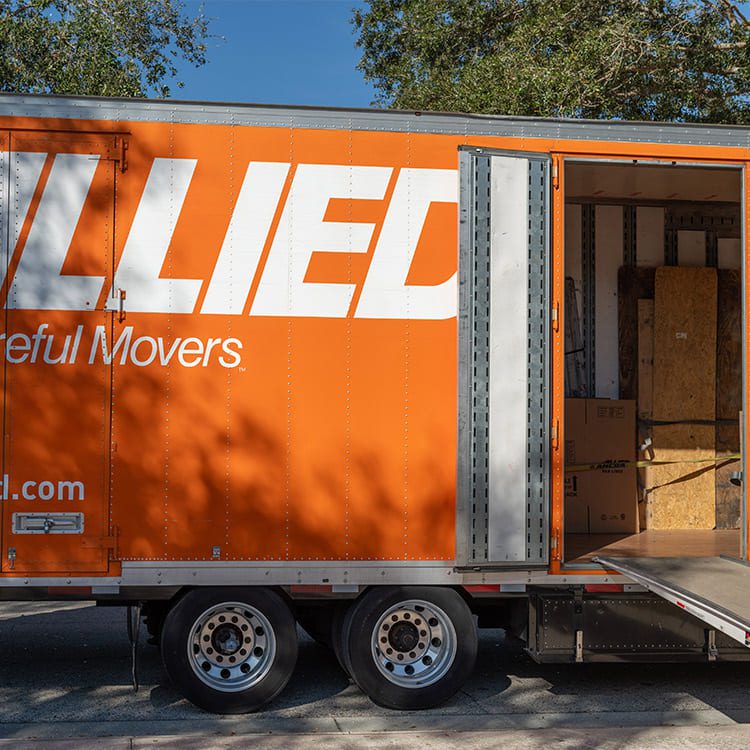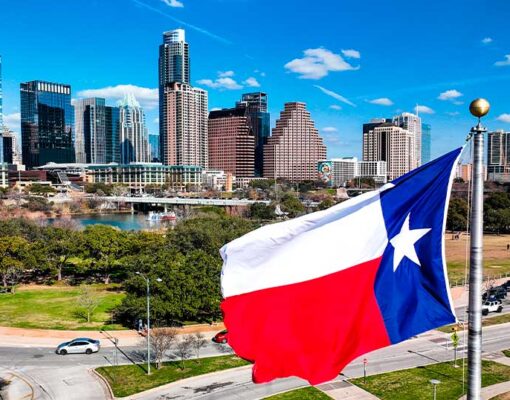
8 Crucial Steps for a Seamless Move from St. Paul to Denver
August 20, 2025
Relocating from St. Paul to Denver represents more than just a change of address. It’s embracing an entirely new lifestyle across 900 miles. While St. Paul offers charming Midwest living with its seasonal lakes and cultural attractions, Denver welcomes you with stunning mountain vistas, 300 days of sunshine, and an outdoor-focused way of life. This significant transition requires thoughtful preparation to ensure your move is seamless and stress-free.
The 900-mile journey between these cities presents unique logistical challenges that demand careful planning. From adapting to Denver’s higher altitude (5,280 feet compared to St. Paul’s 830 feet) to navigating a more competitive housing market, this relocation involves considerations that go beyond typical moving concerns. Professional long-distance movers can significantly reduce the stress associated with such a major life change – if you choose wisely.
When planning your move from St. Paul to Denver, consider these crucial factors:
- Significant climate differences, trading humid continental weather for Denver’s semi-arid conditions with rapid temperature fluctuations
- Higher cost of living, particularly in housing, is balanced by competitive salaries and lower property taxes
- Altitude adjustment period affects everything from hydration needs to exercise capacity
- Logistical challenges of a long-distance interstate move require specialized planning
- Cultural transition from Midwest sensibilities to Denver’s blend of outdoor enthusiasm and urban sophistication
This guide will walk you through eight essential steps to guarantee your St. Paul to Denver relocation proceeds smoothly, addressing everything from research and budgeting to settling into your new Rocky Mountain home.
Step 1: Research your new home in Denver

Before packing a single box, thorough research about Denver will help you make informed decisions and ease your transition. Focus on the following:
- Understand Denver’s neighborhoods and housing market
- Denver offers over 80 distinct neighborhoods, each with its character
- For young professionals, consider LoDo (Lower Downtown) or RiNo (River North Arts District) for vibrant nightlife and creative spaces
- Families often prefer Washington Park or Central Park for their excellent schools and green spaces
- Budget-conscious movers should explore Montbello or East Colfax for more affordable housing options
- Prepare for a more competitive housing market with median home prices around $615,000 (compared to much lower prices in St. Paul) and rentals averaging $1,600+ monthly
- Consider climate differences and how they’ll affect your lifestyle
- Denver sits at 5,280 feet above sea level, which can cause altitude adjustment issues for newcomers
- Expect 300+ days of sunshine annually, a stark contrast to St. Paul’s cloudier climate
- Prepare for dramatic temperature swings of 30-40 degrees within a single day
- Winters are milder than St. Paul but still snowy (averaging 60 inches yearly)
- Higher UV exposure requires year-round sun protection
- Explore local amenities, schools, and job opportunities
- Research Denver’s strong job market in technology, aerospace, healthcare, and finance sectors
- Major employers include Google, Amazon, Lockheed Martin, and UCHealth
- Investigate school districts: Denver Public Schools offers various programs, but the quality varies by neighborhood
- Explore outdoor recreation options: Denver provides easy access to hiking, biking, and world-class skiing
- Consider lower property taxes (0.49% vs. Minnesota’s higher rates) and state income taxes when budgeting
Step 2: Create a comprehensive moving checklist
Organizing your move step-by-step to avoid last-minute issues. Begin months ahead with key tasks.
- 2-3 Months Before: Research and book a reputable moving company with experience in moving from St. Paul to Denver relocations, request multiple quotes, and verify their licensing for interstate moves.
- 1 Month Before: Begin notifying important parties of your address change (bank, credit cards, insurance, subscriptions), and set up mail forwarding with USPS.
- 2 Weeks Before: Arrange for utilities to be disconnected in St. Paul and connected in Denver (Xcel Energy is Denver’s primary provider).
- Moving Day: Keep essential documents with you (such as birth certificates, passports, and financial records) and not in the moving truck.
- First Week in Denver: Update your driver’s license, vehicle registration, and voter registration with your Colorado address.
Step 3: Budget for your move from St. Paul to Denver

Setting a realistic budget covers all aspects of your move, including hidden costs. Understanding these will help you avoid financial surprises during your transition.
- Expect long-distance interstate moving costs between $2,500-$5,000, depending on home size and services needed.
- Factor in often-overlooked expenses, including temporary storage ($100-$300/month), utility connection fees, travel costs (gas, lodging, meals), and deposits for your new residence. Moving quotes should start with an in-home or virtual survey for accuracy.
- Weigh DIY moving versus professional services carefully. While renting a truck might seem cheaper initially ($1,500-$2,000 one-way), added costs for gas, insurance, loading help, hotels, and time investment often make professional movers a better value on a 900-mile journey.
Step 4: Declutter and downsize before packing
Reducing what you move can save significant money and effort. Start sorting your belongings well in advance to lighten your load.
- Create four categories: keep, donate, sell, and discard. Be honest about items unused in the past year and consider if they’re worth moving across 900 miles.
- Long-distance moves are typically priced by weight or volume. Every extra item increases costs, especially heavy ones like books, furniture, and appliances. Digitize documents, photos, and media where possible.
- Strategically sell or donate unwanted items. Host a garage sale weeks before moving day, list items on Facebook Marketplace, Craigslist, or OfferUp. Donate to charities or specialty centers for potential tax deductions and use proceeds to offset expenses.
Step 5: Choose the right moving company
Selecting a reliable moving company experienced in interstate moves is essential. Research thoroughly to find professionals who meet your needs.
- Look for movers specializing in St. Paul to Denver relocations. Verify their USDOT number, interstate licensing, and membership in professional organizations.
- Request a detailed written estimate from virtual or in-home surveys. Beware of suspiciously low quotes. Understand binding vs. non-binding quotes
- Evaluate reputation through reviews on Google, Yelp, and the Better Business Bureau. Confirm they offer replacement protection for your belongings.
- Confirm essential services: a dedicated move coordinator, packing assistance for fragile items, and shipment tracking.
Step 6: Pack strategically for a long-distance move

Proper packing safeguards your possessions and speeds unpacking. Using quality materials and an organized system is critical for the long journey.
- Invest in sturdy boxes, bubble wrap, packing paper, and furniture blankets. For valuable or fragile items like artwork and heirlooms, use specialty materials or professional packing services.
- Label each box clearly with destination room, contents, and handling instructions (e.g., “FRAGILE,” “THIS SIDE UP”). Color-coded labels facilitate unpacking.
- Pack a well-prepared essentials box with toiletries, medications, chargers, bedding, and clothes for the first few days. Keep this box with you during transit, not on the truck.
Step 7: Prepare for the journey from St. Paul to Denver
Planning your travel logistics ensures a smooth move day. Consider route, accommodations, pet care, and vehicle transport to avoid surprises.
- The 900-mile drive takes 13-14 hours. Plan breaks and overnight stops, especially in cities like Kansas City or Omaha. Check weather forecasts, particularly in winter.
- Book accommodations early if driving multiple days. Consider flying while shipping belongings separately if time is limited.
- Prepare pets with vaccinations, ID tags, and familiar items. Plan breaks and bring adequate food and water. Use motion sickness medication if needed.
- Service vehicles for mountain driving conditions: check tires, brakes, and coolant. Research auto transport services for door-to-door delivery if not driving yourself.
- Keep important documents and valuables with you, never in the moving truck. Create a “survival kit” with essentials and consider extra insurance for valuable items traveling with movers.
Step 8: Settle into your new life in Denver

The move isn’t complete until you’ve settled comfortably. Efficient unpacking and prompt administrative updates ease your adjustment to Denver.
- Start by unpacking essential rooms, bedroom, bathroom, kitchen. Use your essentials box immediately. Break unpacking into manageable daily tasks to avoid overwhelm. Consider professional unpacking services if your budget allows.
- Register for utilities with Xcel Energy (electricity, gas) and Denver Water.
- Update your driver’s license, vehicle registration, and voter registration promptly.
- Get involved with local community groups and explore Denver’s outdoor lifestyle to acclimate socially and culturally.
Ready to Make Your Move?
Relocating from St. Paul to Denver is a big step, but careful preparation and trusted movers make it smooth and exciting. Start researching neighborhoods, budgeting wisely, choosing experienced movers, and packing strategically. Then settle confidently into your new Rocky Mountain home.
Contact moving experts Piepho Moving & Storage, specializing in St. Paul to Denver relocations, today to ensure a stress-free transition and start your next adventure with confidence!




